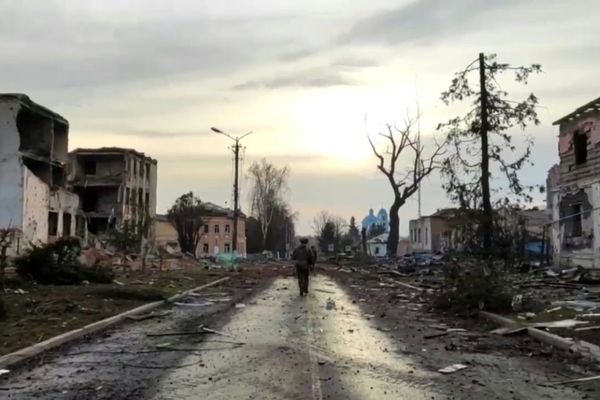
Fonthill Abbey in Wiltshire is one of the great lost wonders of British architecture, a neo-gothic giant with cathedral-sized interiors, built from 1796 to 1813, whose 90-metre tower collapsed and was rebuilt several times. It fell for the last time in 1825, since when the rest of the building has all but disappeared.
It also takes its place in Queer Spaces: An Atlas of LGBTQIA+ Places and Stories, alongside clubs, bars, railway carriages, bookshops, community centres, public parks, private houses and a Castro-era ice-cream parlour in Havana. Fonthill Abbey was built for his own use by an exceptionally wealthy man, William Beckford, whose prospective career in public life was ended when he was outed as a “sodomite”. He “consoled his unhappiness”, as the book puts it, by building his fantastical house, where he longed “for a ‘beatific vision’ in which a beautiful angelic youth would come forth from the heavens to embrace him with love and understanding”. As conspicuous as it was, its main purpose was to shelter him from a hostile world, creating instead a private internal universe of mirrors, stained glass, “lustrous multicoloured objets d’art” and carefully framed views out to the surrounding landscape.
Queer Spaces is edited by Adam Nathaniel Furman, an architecturally trained artist and designer well known for his taste-busting adventures in colour and decoration, and Joshua Mardell, an architectural historian. Together they have invited more than 50 contributors – film-makers, artists, planners, activists, urban geographers, researchers, writers – to choose and write about queer spaces that mean something to them. Each place gets a spread or two of words and images to communicate what makes them special.

Examples come from all over the world – Italian villas where European aristocrats photographed local youths, the Oddbird theatre in New Delhi, the Today x Future bar in the Philippines – and there is absolutely no conformity of appearance. Some are conventional places made queer only by the lives led inside them, such as working-class houses and pubs in Sheffield or the Guildford hotel in Leeds, which unwittingly hosted, in 1974, a seminal conference on what was then called “transsexualism”. Some are purpose-designed to celebrate their queerness. Some are transitory, some permanent, some – like the zoom-based Queer House Party – virtual more than physical.
Within an orderly graphic layout, the book offers a riotous array of imagery, one that includes more actual human beings than the average book on architecture. Yet certain themes recur. One is interiority, the need and desire, as at Fonthill, to create inner worlds protected from external aggression and misunderstanding. Others are ingenuity and subversion, as in the earthquake-damaged cathedral in Managua which, deemed unsafe for worshippers, was from 1972 to 1990 “an ‘underground’ home for queer communities”. “A defining characteristic of queer space,” one contributor writes, “is its deformation, subversion and appropriation of space.”
Another recurring theme is a free and transgressive attitude to the conventions of architecture and construction. A star of the book is Finella, a house in Cambridge where, between the wars, the gay English don Mansfield Duval Forbes conjured an interior out of wired glass panels backed by silver leaf, copper Plymax and yellow silk. Finella promiscuously mixed gothic, classical, modern and Chinese motifs, somehow to conjure the palace of the legendary Scottish queen after whom the house was named. Many of the works show a different attitude to eternity from the architecture you get in conventional history books. The Cave of Harmony, a cabaret club in 1920s London, migrated around three locations in eight years. Fonthill Abbey, monumental as it was, wasn’t really built to last.

Queer Spaces has an acknowledged debt to a book of almost the same name, Queer Space, published in 1997 by the American architecture critic Aaron Betsky, which broke new ground by treating the architecture of same-sex desire as a subject of architectural-historical study. The older book is analytical and focused, developing arguments as it goes. The new one is looser and broader, with a wider definition of “queer” than Betsky’s.
Queer Spaces is generous in range and rich in creativity. It doesn’t try to draw conclusions, just to offer examples of what Furman calls “spaces where you can act freely in a manner that is truly consonant with your inner self”. Which, really, is a fair definition of what all architecture should achieve.
• This article was amended on 16 May 2022 to correct some misspellings, including in the headline, of Adam Nathaniel Furman’s surname.
Queer Spaces: An Atlas of LGBTQIA+ Places and Stories, edited by Adam Nathaniel Furman and Joshua Mardell, is published by RIBA (£40). To support the Guardian and Observer order your copy at guardianbookshop.com. Delivery charges may apply







